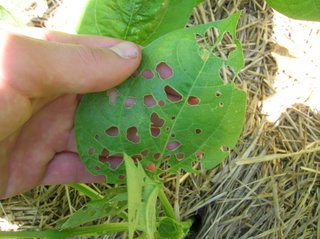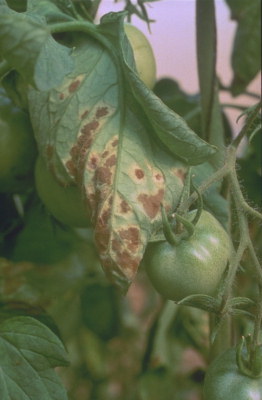Early June pics of the garden.
I am on break from medical school for about 3 weeks so I have lots more time to put into cultivation. The weather is cooperating mostly this June. It has gotten really hot really quick, but most nights are still cool. The humid heat is good for the summer crops (the sweet potatoes, the peppers, the okra, squash, tomatoes, etc.) but the greens, sweet peas, fava beans, and other cool weather crops are suffering. It is kinda weird to watch the peas burn up in the hot sun. It seems like I dug through the frosty soil just yesterday to drop the little peas in the ground. During the early spring I get frustrated with the slow pace of growth and the persistent cold. During the early summer I get frustrated with the powdery mildew, the cucumber beetles, the black spot mold, the merciless sun that causes the chard to wilt and the turnips to look half dead. Overall I just like to watch the progress. Alright. On to the pictures!

Nasturtiums. Edible flowers. They have a little sweetness and then a very short radish-like spicy kick. We eat them on salads and I gave some to a friend who owns a pastry and cake shop with them. She also uses mint from the garden to make this awesome mint cream dessert. I gave her some lavender today too and she is going to make a lavender cream dessert.

Summer squash flower. This the "yellow straightneck variety. We ate some in a stir fry the other night. You can eat the flowers too. You batter them and fry them.


I am pretty excited about the cauliflower. I need to put all the plants in full sun next year. These pics are of one of the best specimens. I think there is a bigger one out there right now. We ate this in an frittata (sp?) (it is a glorified omelet). I think I will either cook or freeze the rest of the crop this week.

Here is Ryan messing with the red chard. You can see the large leaves of the developing brussell sprouts over his left shoulder (on the right side of the pic). I have not grown those before so I don't really know what will happen.

Here is the "French fillet" snap beans. You can see some holes in the bottom leaves. That is damage from the Mexican bean beetle. I have been killing all the beetles I can find every morning and it seems to have helped control them. I just pick our first handful of beans and they tasted excellent. I am looking forward to a bumper harvest. I want to make more "dilly beans"

These are the growing tomatoes. I swear they have grown about a 1/2 foot since I took this pic. They are really taking off. I just built the new cages around them. They are made of large gauge concrete rebar mesh. It is perfect for the job. You can reach you hands through and pick tomatoes or prune the plants and they are very very sturdy in a storm.

A close up of the tomato cage. You can see the leaves have not yellow discoloration of black spots. I think the early and heaving straw mulching has paid off in terms of avoiding the black spot mold.

Part of the "experimental crop". This is quinoa. It is a great grain and is very healthy. The flower heads have set and now I am hoping that the nights don't get to hot to quick for the flowers to turn to seed. I am told the quinoa wants cool nights. It is accustomed to high altitude weather and poor gritty soil. We have warm humid night with nutrient rich soil, so we will see how this works.

Here is one of the many developing cabbage heads. I hope one gets bigger than my head. I got to start thinking about cabbage recipes.

Sweet potato plants are starting to grow faster. I think their roots are pretty well established now and we will see some rapid growth.

Here is the lavender that Natasha is going to make into a cream dessert. I am going to dry some for teas too.

First carrots and some of the last sweet peas.

Also part of the experimental crop. These are Jerusalem artichokes or "sunchokes". I have not eaten a lot of them, but you can use them like potatoes. The stalks you see here will keep growing tall all summer long and will put up scraggly looking sunflower like blossoms. Under the ground they form knobby looking tubers that you can cook or eat raw. You can dig them up in the middle of the winter. They store in the ground through the frost.

Here is the corn plants. They really must be growing an inch a day at this point.

Here is the first load of strawberry jam. Since this pic I made a second load and I made a load of apricot jam from apricots that my friend and former housemate Tim gave me. He has a tree in his yard in new Mexico and he brought me up a bunch (dried and fresh). I am trying to get the basement in order so that I can store all this down there. I have a deep freeze down there now and I am filling it with garden greens and broccoli and strawberries, etc...

View from my neighbors stairs. It is growing so fast right now.
Ok I am off. I will probably take more pictures soon.

 You can see that I harvested the middle two rows. I still have not taken out the outside rows. I will likely do that this weekend (july 1st)
You can see that I harvested the middle two rows. I still have not taken out the outside rows. I will likely do that this weekend (july 1st) I planted a hot weather "Contender" string bean in the garlic patch. It pays to do an early variety b/c you can fill the patch up with beans after you pull the garlic. AND the beans help improve the soil!
I planted a hot weather "Contender" string bean in the garlic patch. It pays to do an early variety b/c you can fill the patch up with beans after you pull the garlic. AND the beans help improve the soil! The fava beans drying outside. I started drying these around 1st or 2nd week in june. I put soybeans in the same spot once I took them out.
The fava beans drying outside. I started drying these around 1st or 2nd week in june. I put soybeans in the same spot once I took them out. Lavender bundles from the herb garden. Great in tea and i am going to try and make a lavender gellato
Lavender bundles from the herb garden. Great in tea and i am going to try and make a lavender gellato I filled up a shelf in the root cellar downstairs. We should have potatoes for the next 5 or 6 months.
I filled up a shelf in the root cellar downstairs. We should have potatoes for the next 5 or 6 months. Green beans, Zuchunni and summer squash. I am very proud of the zucchuni, considering how much trouble I have had growing them in the past.
Green beans, Zuchunni and summer squash. I am very proud of the zucchuni, considering how much trouble I have had growing them in the past. I made this into cabbage rolls. Ryan made a good honey mustard sauce for them, so I think I might do this again.
I made this into cabbage rolls. Ryan made a good honey mustard sauce for them, so I think I might do this again.  "Knee high by 4th of July"?? HAH! It is late june and many of the plant are past my waist. My neighbor's soil is good stuff. I can't wait for our first bite of sweet corn.
"Knee high by 4th of July"?? HAH! It is late june and many of the plant are past my waist. My neighbor's soil is good stuff. I can't wait for our first bite of sweet corn.























































